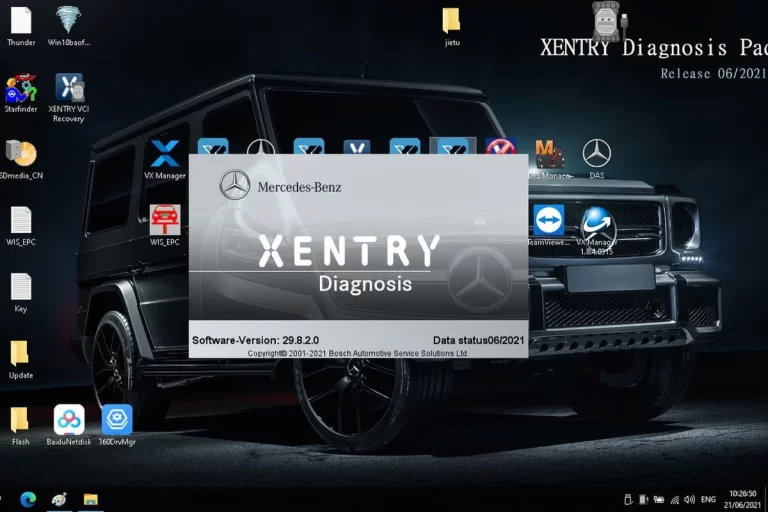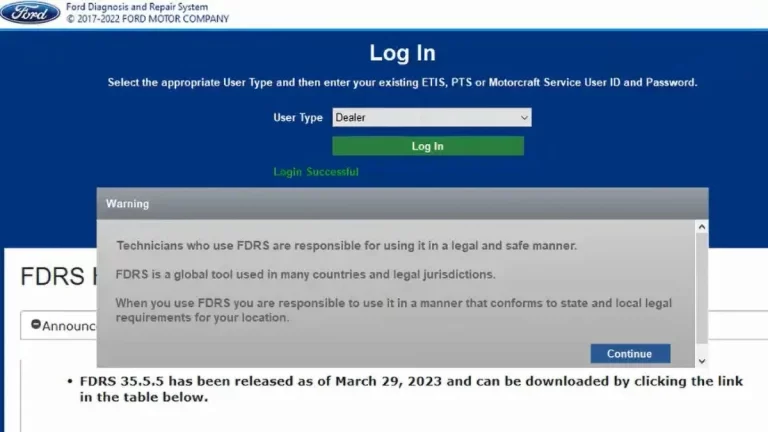How to fix the DSC malfunction in my BMW?
DSC Malfunction BMW can become evident during instances of traction challenges while driving or when the DSC warning light signals an issue. Addressing this concern may involve not only mechanical repairs but also the possibility of resetting the system. Detailed guidance on how to undertake this reset procedure will be provided by experts from Beats The Dealers in the forthcoming article.
What is DSC BMW?
DSC, short for Dynamic Stability Control, is a refined system implemented by BMW to maintain optimal balance and enhance traction across all wheels during acceleration or deceleration. It actively detects early indications of oversteer or understeer, intervening to improve vehicle stability even in situations where the grip on the road surface is compromised.
While the vehicle is in motion, DSC continuously monitors various sensor inputs, including wheel rotation, steering angle, tire edge force, pressure, and rotation angle. Based on this data, it dynamically adjusts braking force to individual wheels as needed, ensuring the vehicle remains in optimal balance and traction for a safer and more controlled driving experience.
How does the DSC module work in BMW cars?
The DSC module in BMW vehicles operates by continuously monitoring wheel slippage and automatically adjusting vehicle controls to maintain stability. When wheel slippage is detected, the system intervenes by optimizing engine output and applying braking force to individual wheels through coordinated management of the 4-wheel anti-lock braking system and the Traction Control System (TCS).
This integrated approach enables the vehicle to sustain stability in various scenarios, such as navigating slippery roads or executing sudden steering maneuvers to avoid obstacles. For instance, if the vehicle tends to veer outward, the system mitigates front wheel slippage by reducing engine power and selectively applying brakes to the inside wheel.
Conversely, if the vehicle approaches the curve at excessive speed, leading to potential rear wheel slippage, the system counteracts this by applying brakes to the outer wheels, effectively restoring stability.
What does a DSC malfunction indicate in a BMW?
When you start your vehicle, the DSC (Dynamic Stability Control) light on the dashboard should turn on briefly and then turn off. This means that the system is working properly. However, if the light stays on or turns on after you have started the engine, it could indicate a problem with the DSC system.
Subsequently, drivers may notice a range of symptoms suggesting a malfunctioning DSC system, including:
- Wheel drifting or loss of traction during high-speed cornering, indicating compromised stability control.
- Difficulty in accelerating smoothly, potentially due to improper engine power management or traction control intervention.
- The sensation of reduced grip or insufficient force from the tires is particularly noticeable during acceleration or braking maneuvers.
These symptoms not only degrade driving performance but also pose significant safety risks, especially during dynamic driving situations or adverse road conditions.
If any of these signs manifest, it is imperative to promptly seek assistance from a qualified maintenance facility or BMW specialist to diagnose and rectify the underlying issue. Ignoring DSC malfunctions could lead to further deterioration of vehicle handling and safety.
Reason DSC Malfunction BMW
The DSC Malfunction in BMW vehicles can lead to significant loss of control, posing a safety hazard. Various factors can contribute to errors within the DSC module. One potential cause is sensor malfunction:
Sensor Issues:
- The sensors responsible for detecting wheel slippage may encounter malfunctions or operate ineffectively. In such instances, the system essentially becomes disabled, depriving the vehicle of crucial traction control capabilities while in operation. Moreover, a malfunctioning sensor can compromise brake functionality, exacerbating safety concerns. This scenario could result in the vehicle experiencing reduced traction and ultimately losing control.
- Regular sensor inspection is crucial to ensure their proper functioning and mitigate potential risks associated with DSC malfunction. Proactive monitoring and maintenance of sensors are essential steps in preserving the effectiveness and safety of the vehicle’s traction control system.
Instability in Braking Force:
The DSC system’s inability to adjust braking force appropriately can result in significant challenges, particularly during cornering maneuvers, potentially leading to loss of vehicle control. Utilizing sensors to monitor the vehicle’s dynamics, the DSC system is designed to promptly activate brakes on individual wheels upon detecting traction loss. However, when the braking force becomes unstable, the system’s efforts to stabilize the vehicle are hindered, exacerbating the risk of control loss.
Issues with the Hydraulic Pump:
The hydraulic pump plays a pivotal role in providing the primary pressure required for the operation of the DSC system. Any deficiencies in this system, such as inadequate pressure output or the presence of leaks, can impair the normal functioning of the DSC system and may even lead to system damage. Without sufficient hydraulic pressure, the DSC system’s ability to regulate vehicle stability and traction is compromised, heightening the likelihood of safety incidents on the road. Regular inspection and maintenance of the hydraulic pump system are essential to ensure the optimal performance and integrity of the DSC system.
Suggestions to fix the issue of DSC Malfunction in a BMW
Here are some suggestions to address the issue of DSC Malfunction in BMW vehicles:
Low Battery:
- If the battery is faulty or low on power, it can affect the normal operation of DSC sensors. Use a multimeter to check the battery’s power output.
- Charge the battery fully using an external charger. If the battery is old or damaged, consider replacing it entirely to ensure a reliable power supply.
Insufficient Brake Fluid:
- Check the brake fluid level after servicing or routine checks. If the fluid level is low, follow the vehicle’s instructions to refill it to the recommended level.
Sensor Error:
- Try resetting the sensors by removing the battery and reinserting it after 15-20 minutes. This action may prompt the sensors to reset automatically.
Sensor Damage:
- If sensors are damaged due to prolonged use or intermittent operation, replacement may be necessary.
- Identify the faulty sensor, remove the old one, and install a new sensor in its place to restore proper functionality.
If the DSC Malfunction issue persists despite these attempts, consider seeking assistance from professionals who have access to specialized equipment and expertise to diagnose and address the problem effectively.
Following their guidance and utilizing professional equipment may be necessary to resolve complex issues with the DSC system.
Guidelines for Resetting BMW DSC
Based on repairmen statistics, DSC system issues frequently arise in X3, X5, Z-series, 3-series, 5-series, and 7-series BMW cars.
In the following instructions, we will walk you through the process of resetting the DSC light on the BMW 3 Series F31 2016 model using the Autel MK808. If you’re using this device for the first time, ensure that you connect to Wi-Fi and log in with your ID and password. If you haven’t created an account yet, you can register on the website before proceeding.
1- Connect the Autel MK808 device to the car through the OBDII connection port.

2- Power on the Autel MK808 diagnostic machine.
3- Navigate to the “Diagnostic” option displayed on the screen.
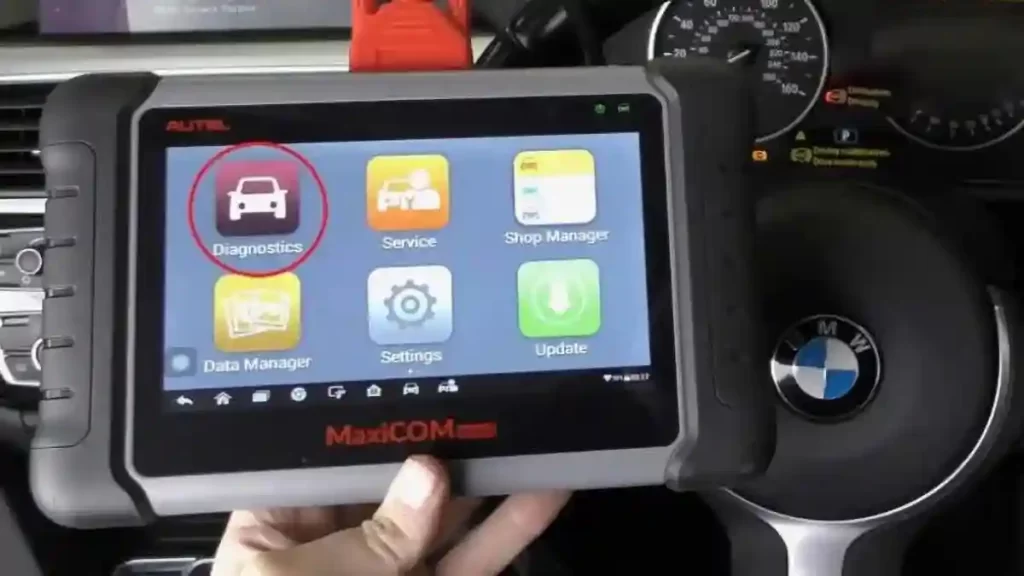
4- Select “BMW” from the available options.
5- Opt for “Manual selection” and choose the specific BMW series corresponding to your vehicle.
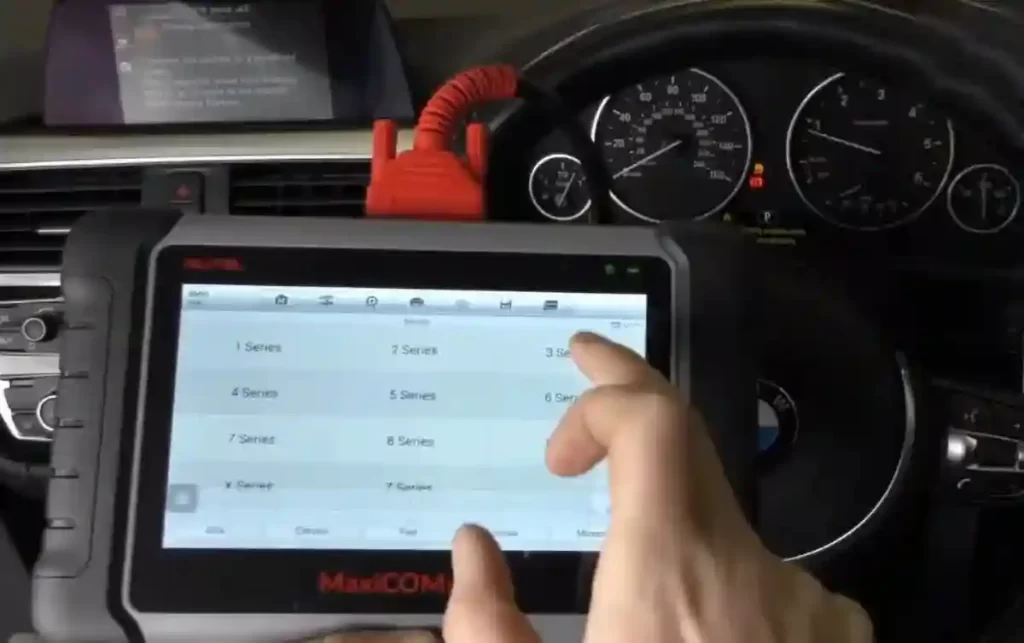
6- The device will establish communication with the ECU (Engine Control Unit), presenting a comprehensive list of systems for diagnostic purposes. Locate the ABS/DSC system within the list.
7- Proceed to “Diagnosis,” then “Control unit,” and finally select “Chassis.”
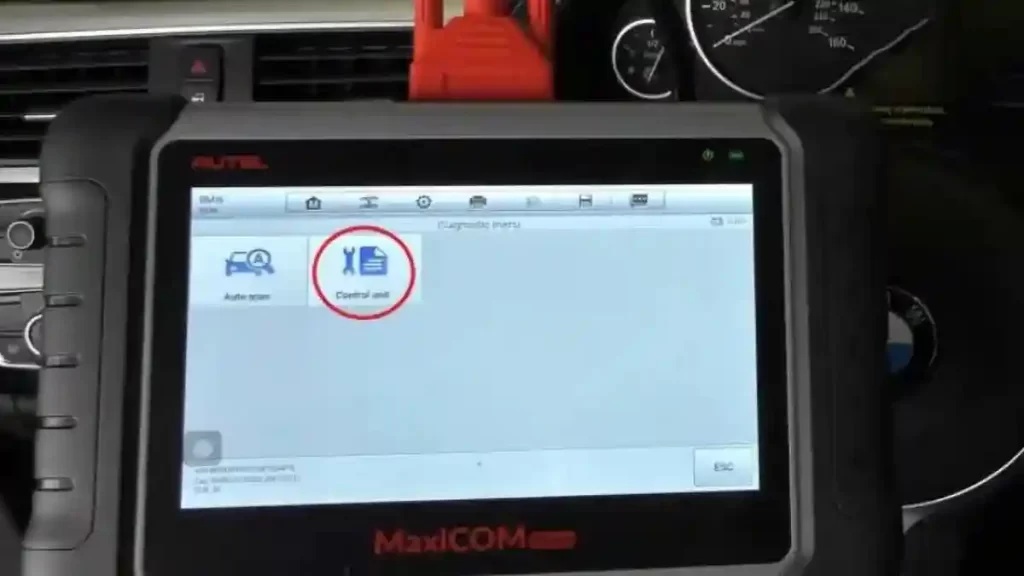
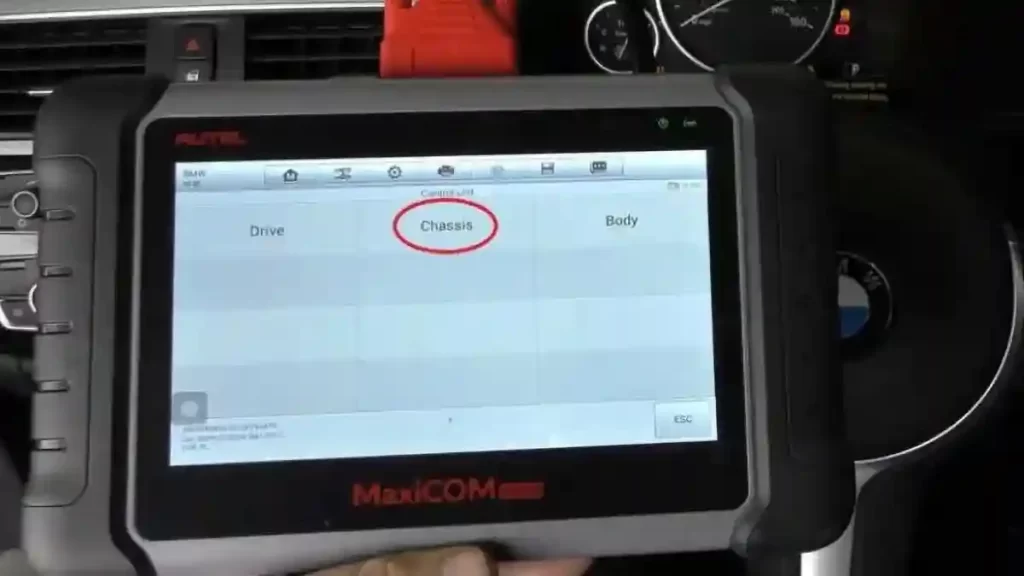
8- Within the Chassis section, identify and click on “ABS – DSC (ABS-Dynamic Stability Control).”
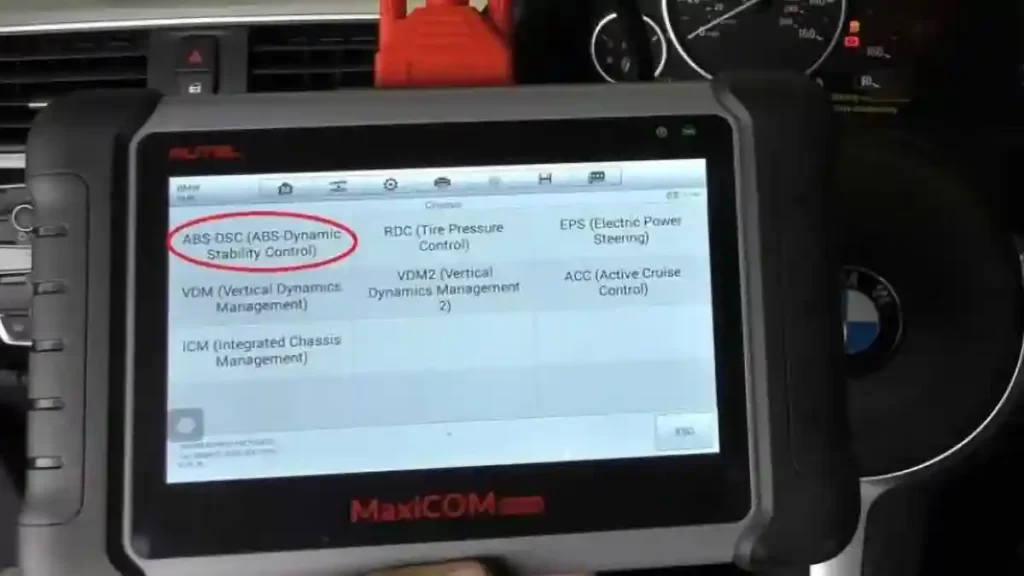

9- Choose “Read codes” to initiate the diagnostic process.
10- Upon completion, the device may display an error code. For example, in this case: 48082A – indicates a potential issue with the right rear ABS sensor’s voltage supply to the battery.
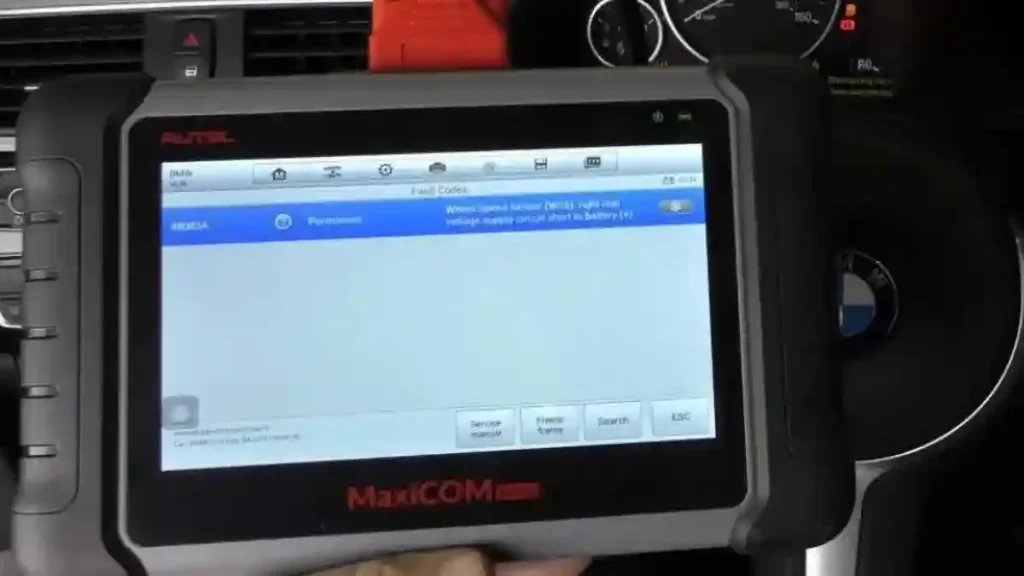
11- Confirm the diagnosis of the right rear ABS sensor issue. If the sensor has been replaced previously, this error may persist.
12- Navigate back to the main menu and select “ESC” (Electronic Stability Control), then proceed to “Erase codes.”
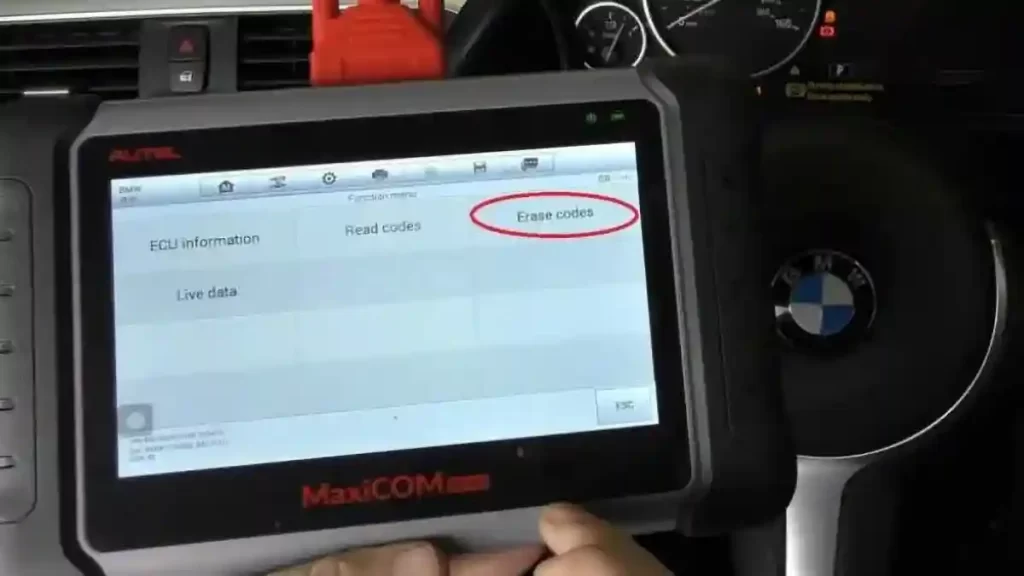
13- Follow the prompts to confirm the deletion of DTCs (Diagnostic Trouble Codes) and freeze data.
14- Once codes have been successfully erased, the device will prompt to press “OK” to finish.
15- Verify that the ABS warning light has been extinguished.
16- For further assurance, return to the “Read codes” section to confirm the absence of any error codes related to the ABS/DSC system.
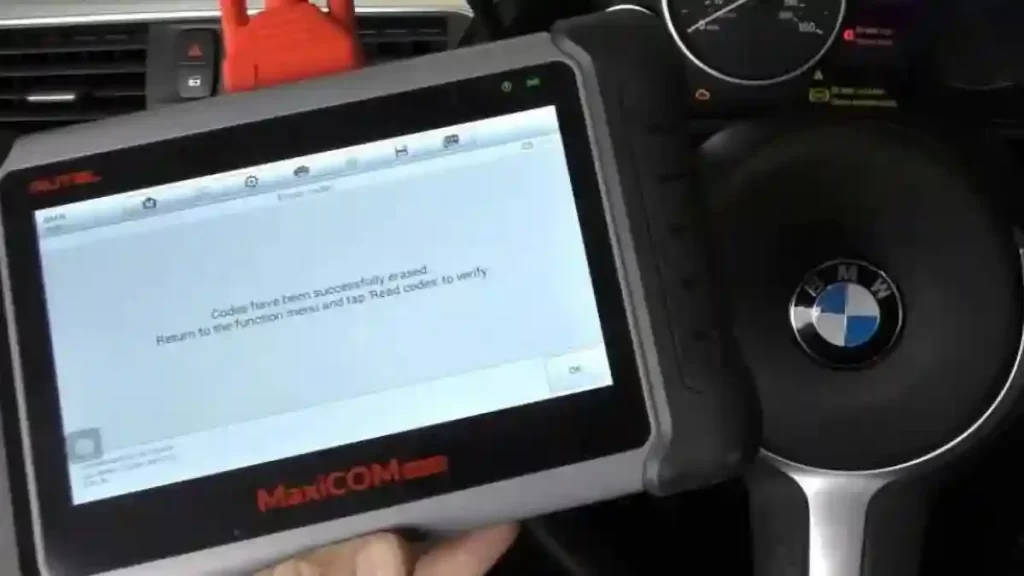
This guide demonstrates the use of the Autel MK808 Diagnostic Tool to reset the ABS for the BMW 3 Series F31. Notably, this tool is compatible with a wide range of BMW models, including but not limited to BMW 3 Series E36, E46, E90, E91, E92, E93, F30, F35, BMW 4 Series F32, F33, F36, BMW 5 Series E39, E60, F07, F10, F11, and more.
Furthermore, ISTA D diagnostic software offers advanced capabilities for comprehensive diagnostics, error reading, and error deletion across various vehicle systems.
The provided information outlines steps to address DSC Malfunction in BMW vehicles and clear associated errors. Should you encounter any difficulties during this process, please don’t hesitate to reach out to Dealers Software for expert support.




